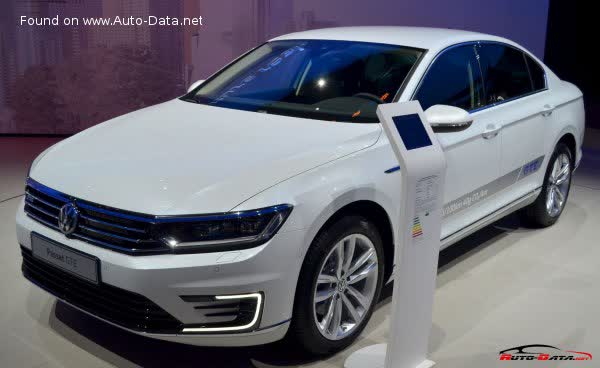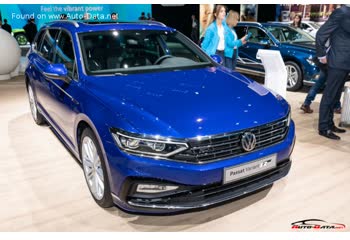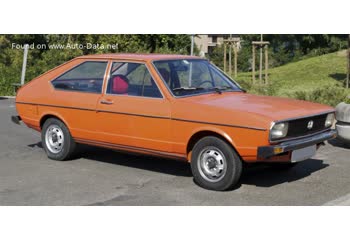Everything you need to know about specifications and performance - Volkswagen Passat 2015 - GTE 1.4 TSI (218 Hp) Plug-in Hybrid DSG

Overview:
What is the engine capacity of a Volkswagen Passat 2015?
The engine capacity of the Volkswagen Passat 2015 is 1395 cm.
Volkswagen Passat 2015 How many horsepower?
The engine power of the Volkswagen Passat 2015 is 156 Hp @ 5000-6000 rpm..
What is the Volkswagen Passat 2015 engine?
Volkswagen Passat 2015 engine is CUKC. (Click to see other cars using the same engine)
How powerful is the electrical system in the Volkswagen Passat 2015?
The power of the electrical system in the Volkswagen Passat 2015 is 218 Hp hp.
How much gasoline does a Volkswagen Passat 2015 consume?
The Volkswagen Passat 2015 consumes 1.7-1.8 liters of gasoline per 100 km
General:
Brand: Volkswagen
Model: Passat
Generation: Passat (B8)
Modification (Engine): GTE 1.4 TSI (218 Hp) Plug-in Hybrid DSG
Start of production: October, 2015
End of production: May, 2018
Powertrain Architecture:Plug-In Hybrid Electric Vehicles (PHEVs)
Body type:Sedan
Seats: 5
Doors: 4
Engine:
Engine systems: Start & Stop System
Power: 156 hp @ 5000-6000 rpm.
Power per litre: 111.8 hp/l
Torque: 250 nm @ 1500-3500 rpm.
Engine Model/Code:CUKC
Engine displacement: 1395 cm
Number of cylinders: 4
Engine configuration: Inline
Number of valves per cylinder: 4
Fuel injection system: Direct injection
Engine aspiration: Turbocharger, Intercooler
Valvetrain: DOHC
Engine oil capacity: 4 l
Engine layout: Front, Transverse
Cylinder Bore: 74.5 mm
Piston Stroke: 80 mm
Compression ratio: 10.5
Performance:
Fuel Type: Petrol / electricity
Fuel consumption (economy) - combined (NEDC): 1.7-1.8 l/100 km
Fuel consumption (economy) - combined: 1.7-1.8 l/100 km
Emission standard: Euro 6
Acceleration 0 - 100 km/h: 7.4 sec
Acceleration 0 - 62 mph: 7.4 sec
Maximum speed: 225 km/h
Weight-to-power ratio: 7.6 kg/Hp, 132.4 Hp/tonne
Weight-to-torque ratio: 4.1 kg/Nm, 242.9 Nm/tonne
Max speed (electric): 130 km/h
Acceleration 0 - 60 mph: 7 sec
Electric system:
Gross battery capacity: 9.9 kWh
Battery technology: Lithium-ion (Li-Ion)
Battery location: Below the floor, under the rear seats
System power: 218 hp
System torque: 400 nm
All-electric range: 50 km
Electric motor power: 115 hp @ 2500 rpm.
Electric motor Torque: 330 nm
Average Energy consumption: 12.5-13.1 kWh/100 km
Electric motor location: Between the combustion Engine and the transmission
Average Energy consumption (NEDC): 12.5-13.1 kWh/100 km
All-electric range (NEDC): 50 km
Maximum revolutions of the electric motor: 6000 rpm.
Space:
Kerb Weight: 1647 kg
Max. weight: 2200 kg
Max. roof load: 100 kg
Max load: 553 kg
Trunk (boot) space - maximum: 968 l
Trunk (boot) space - minimum: 402 l
Permitted trailer load with brakes (12%): 1600 kg
Fuel tank capacity: 50 l
Permitted trailer load without brakes: 750 kg
Permitted towbar download: 90 kg
Permitted trailer load with brakes (8%): 1900 kg
dimensions:
Length: 4767 mm
Width: 1832 mm
Height: 1476 mm
wheelbase: 2786 mm
Width including mirrors: 2083 mm
Front track: 1578-1586 mm
Rear (Back) track: 1562-1570 mm
Ride height (ground clearance): 145 mm
Minimum turning circle (turning diameter): 11.7 m
Powertrain, Suspension and Brakes:
Drivetrain Architecture: The Internal combustion Engine (ICE) and electric motor drive the front wheels of the car with the ability to work in full electric or mixed mode.
Drive wheel: Front wheel drive
Number of gears and type of gearbox: 6 gears, automatic transmission DSG
Front brakes: Ventilated discs
Rear brakes: Disc
Assisting systems: ABS (Anti-lock braking system)
Steering type: Steering rack and pinion
Power steering: Electric Steering
Tires size: 215/55 R17; 235/45 R18
Wheel rims size: 6.5J x 17; 7J x 17; 8J x 18
Front suspension: Independent type McPherson, Transverse stabilizer
Rear suspension: Independent multi-link suspension, Transverse stabilizer
See also

Last generation.
Its production began in 2019 until 2023

Other generation.
Its production began in 1978 until 1980
Write a comment